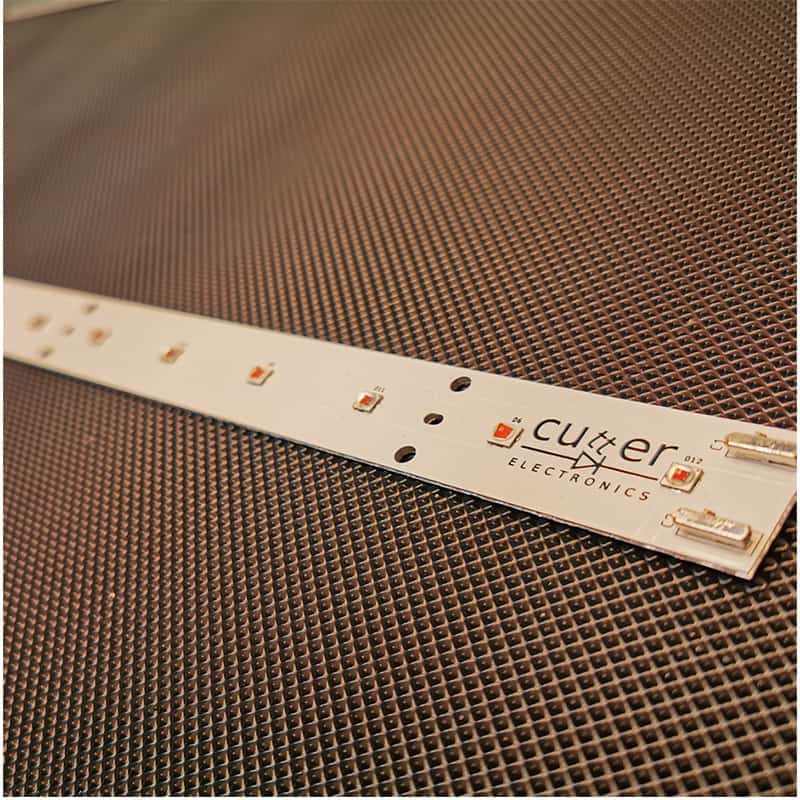hybridway2
Amare Shill
Its got the Purple rails but i don't think so. I linked the Lumitek last page.Lumatek?
This looks more like a 4x4, 600 w fixture or more.
Exactly what I'd like to own, as for design.
Its got the Purple rails but i don't think so. I linked the Lumitek last page.Lumatek?
I can't quite make out what they've got printed on each board. Its there though....Its got the Purple rails but i don't think so. I linked the Lumitek last page.
This looks more like a 4x4, 600 w fixture or more.
Exactly what I'd like to own, as for design.

So I went and tried to find and answer to my own question. Comments on this would be appreciated.Has anyone used the Blackdog Leds? Are they worth the money? They have some pretty good
info on growing on their website. What makes them so expensive compared to some of the other
Leds.
The plants protective response will not be triggered at the higher wavelengths. I don't think even the higher wavelength UV such as UVA will work. Pretty sure you have to get down to around 310nm or so, but I could be wrongUV diodes have had real durability issues in the past, causing some manufacturers to use fluorescent UV tubes in their lights. Like California Light Works. Makes me wonder.
I also wonder if increased deep blues might help in the same way as what we call UV since the spectrum wave lengths are so close.
I just checked them out, yeah waaaay overpriced. the 630 watt light they have is listed at $1549. Do the math, you are paying $2.45 per watt, before taxes. They haven't invented some new type of LED, so paying that much is just throwing money away. I will say, that light will grow some absolutely amazing plants. It is more of a light for people with a lot of money that don't know betterYa, once again black dog blaintantly lying.
They suck. Diode spread is horrible, and the chips are shit, five watt mono's. I think lots of over head.Has anyone used the Blackdog Leds? Are they worth the money? They have some pretty good
info on growing on their website. What makes them so expensive compared to some of the other
Leds.
LIST OF LED COMPANIES w/ LINKS
For people just getting into the LED game figuring out which company makes what light can be a challenge. This is a list of the companies and the name(s) of the panel(s) they make.
Lighthouse Hydro - Blackstar
High Tech Garden Supply - HTG
Hydro Grow LED - Penetrator
Grow LED Hydro - Spectra
Kessil - Kessil H150/H350
Magnum LED - Magnum LED
Blackdog - BDxxxx/Platinum XL
Pro Source LED - Pro Source LED
Haight Solid State LED - Haight SS LED
Apache Tech - AT120xx
Advanced LED Lights - Diamond series/Extreme
Plant Photonics - Hand Made LED Lights
Pro-Grow Series LED - Pro-Grow LED
Grow Stealth LED - Grow Stealth Quantum LED
Stealth Grow LED - SGxxxx
UNKNOWN COMPANIES
E.shine systems - E.shine Panel 3G/4G
Light Blaze - Lightblaze 400
Fero LED Lighting - Fero xxx 4G
There are others, and I can add to the list if people have suggestions!
Thanks for the input folks. Also looking at Electric sky 300 v2 looks like a good light for the
money, $695 and lots of good reviews from users. Looks like 2 will do great in a 4x4 area. They
are not full spectrum is this all I need for veg and flower?
brighter at same price: citizen clu058-1825, luminus cxm32, vero29C
cheaper at similar efficiency: luminus cxm22, citizen clu048-1818, vero 29 B/D
none of these have any "magic bullet" spectrum. while a 3500k from one mfr may differ slightly from another mfrs 3500k, the plants dont seem to mind, ive seen great grows with all kinds of chips
Nice to meet you, want to know the build that can get the best yield with 3 * 3 Tento that can be used in 2020 Japan Japan is 100 volts
